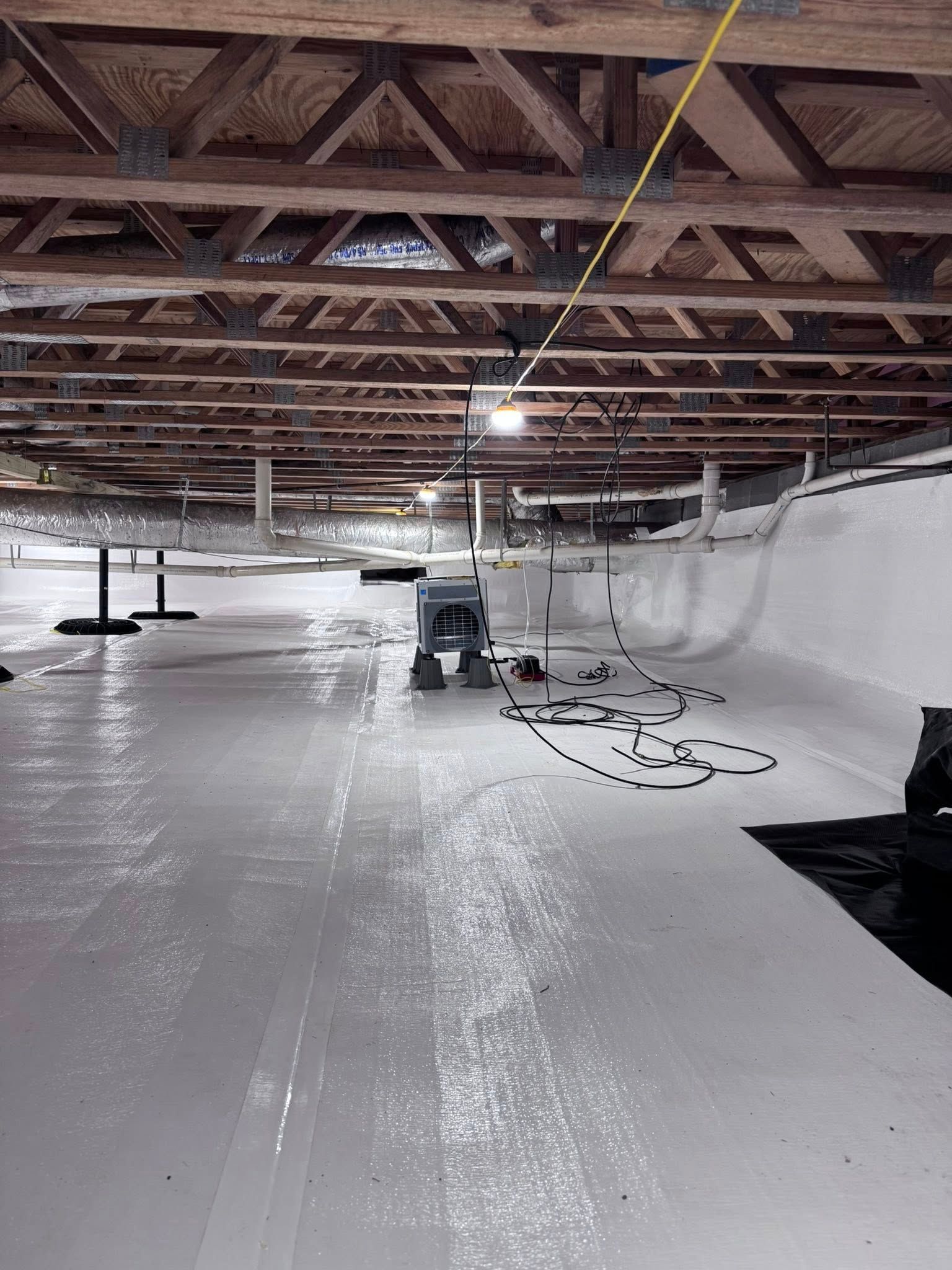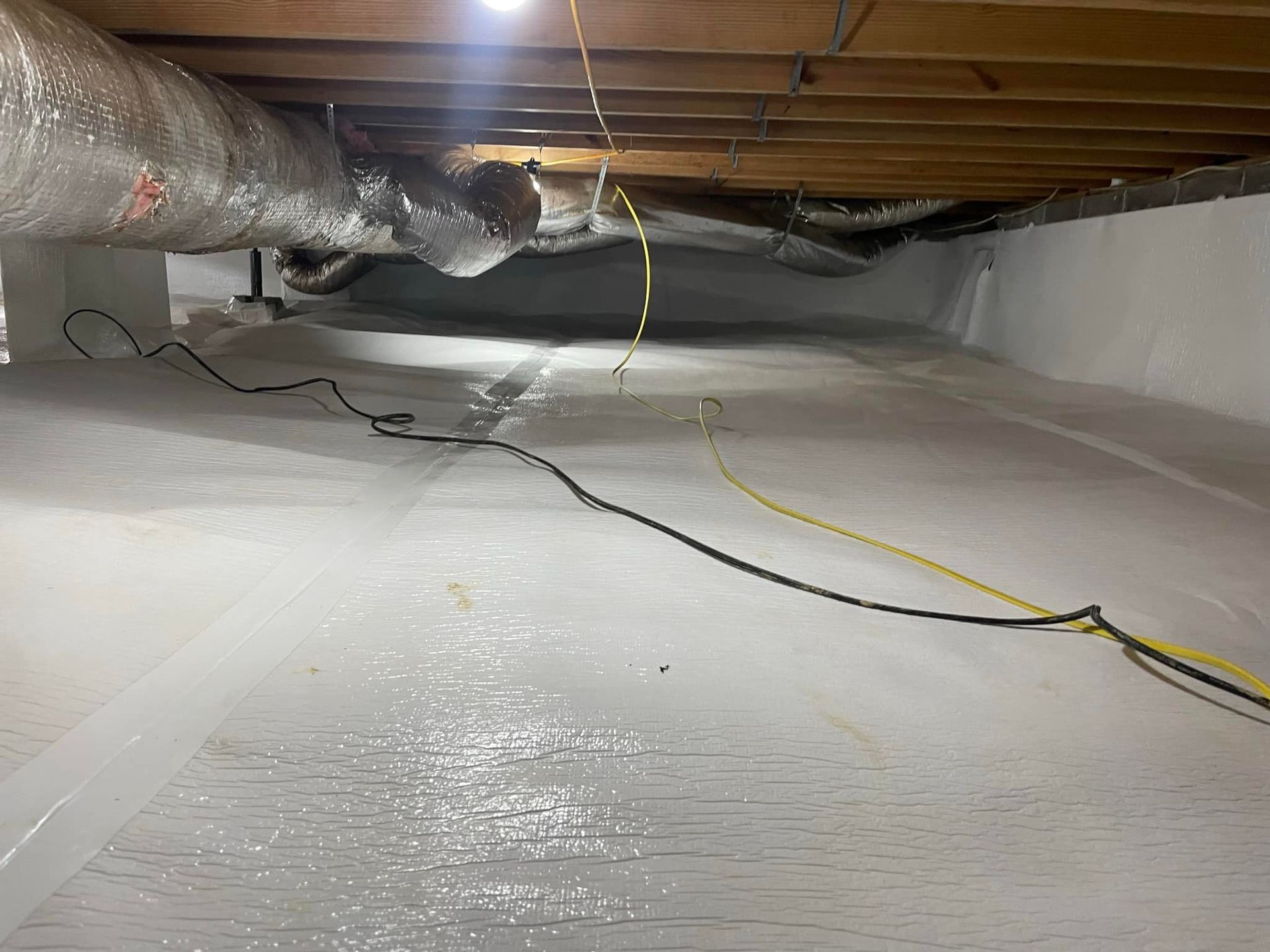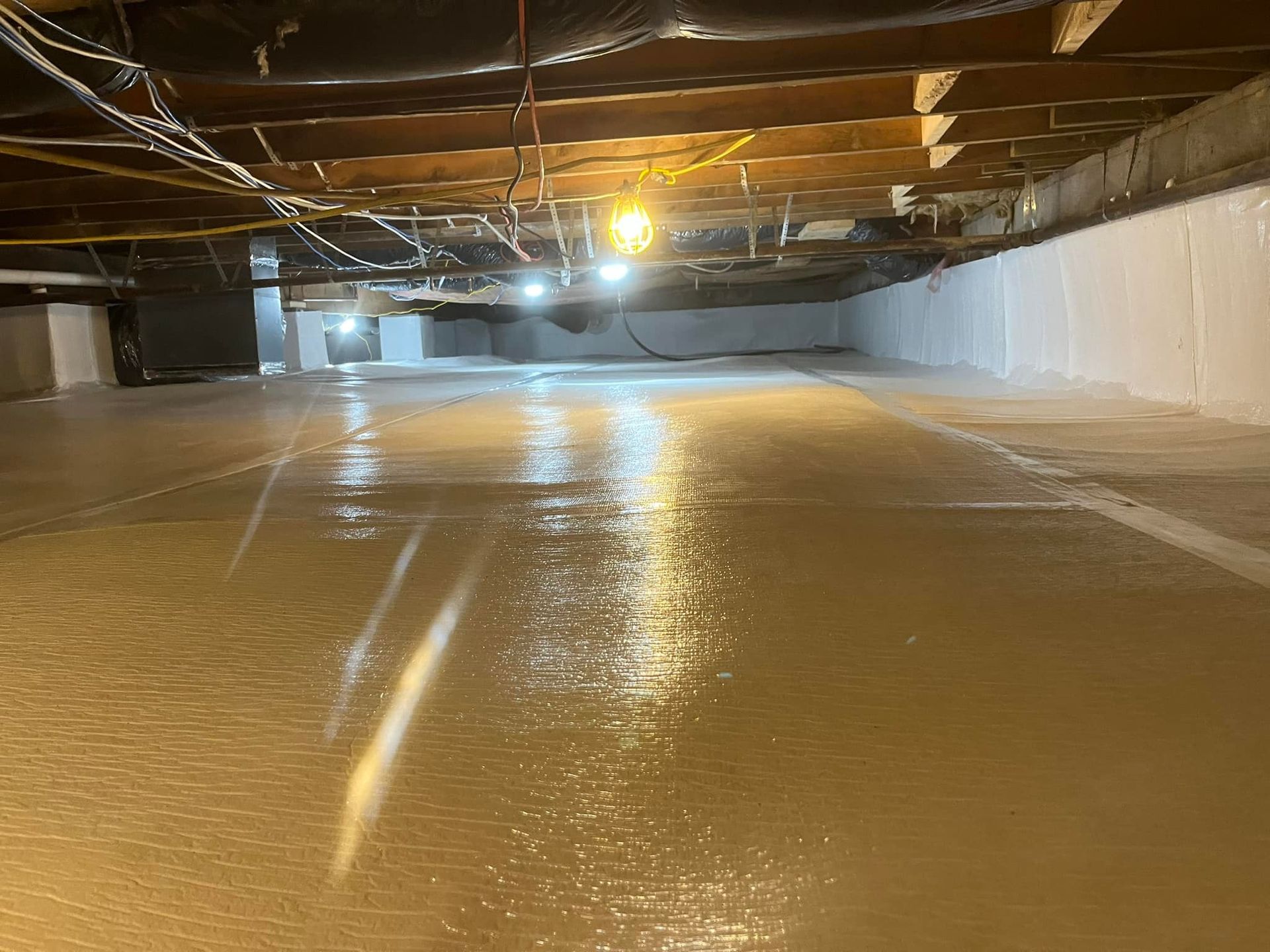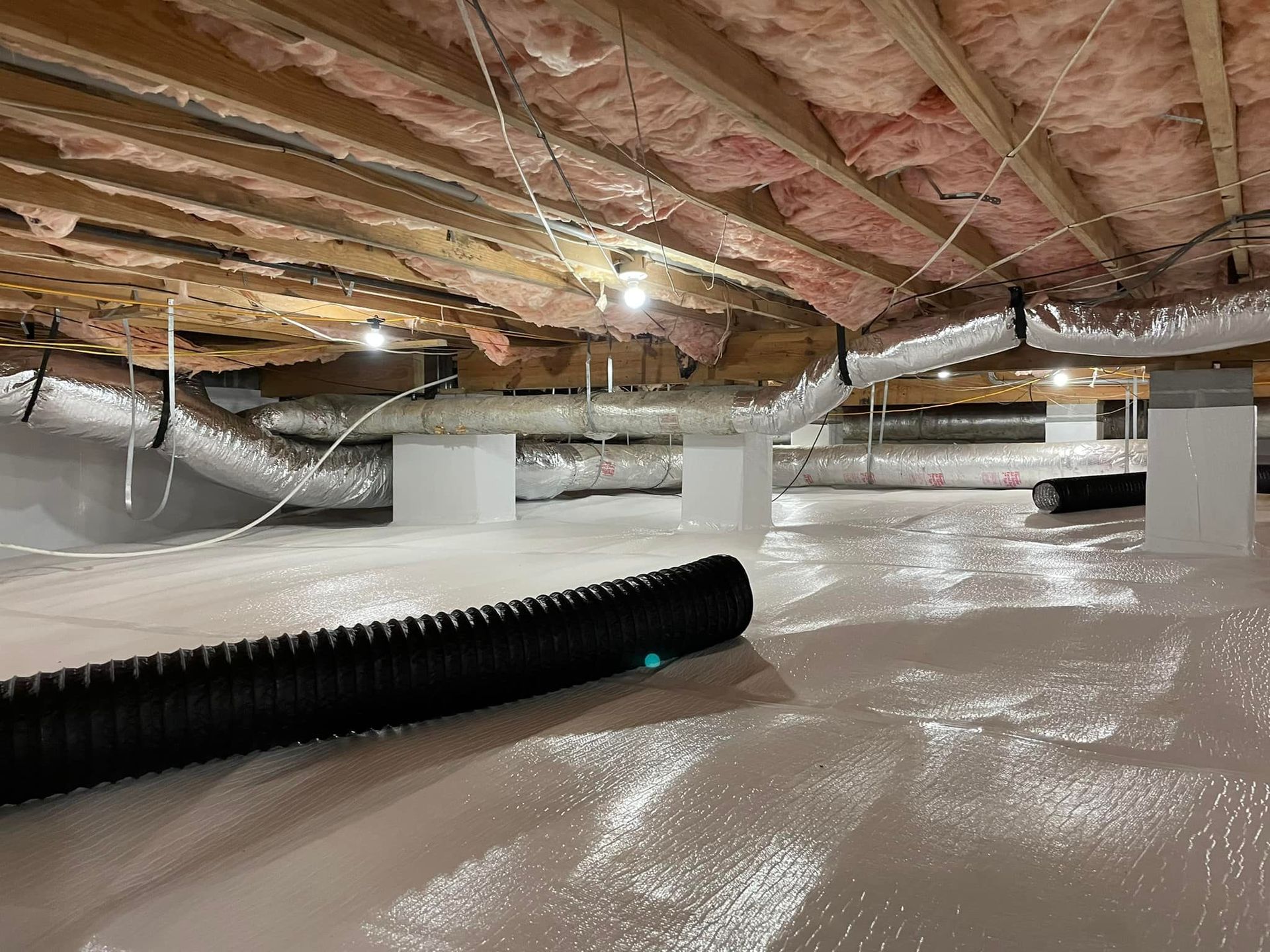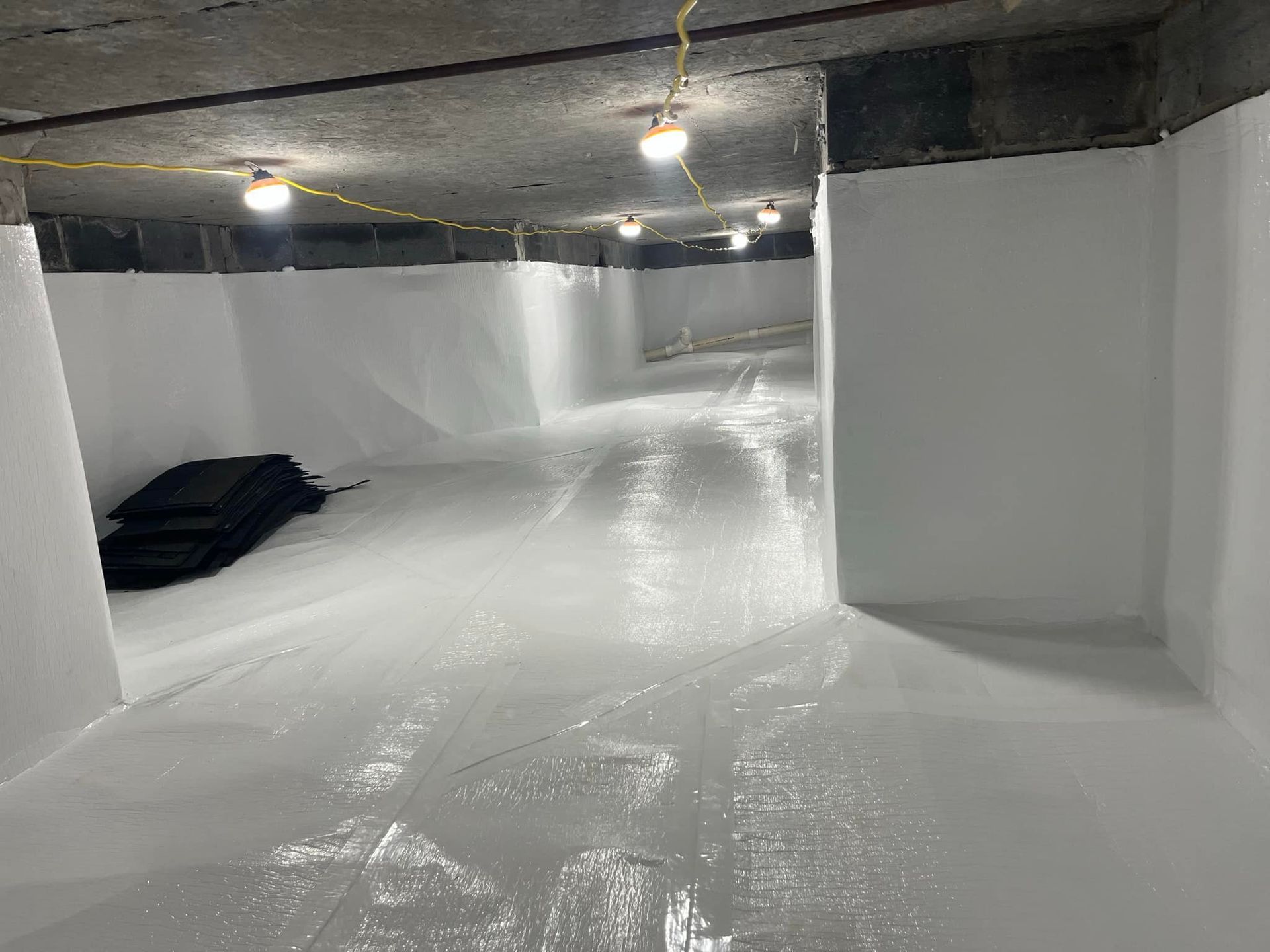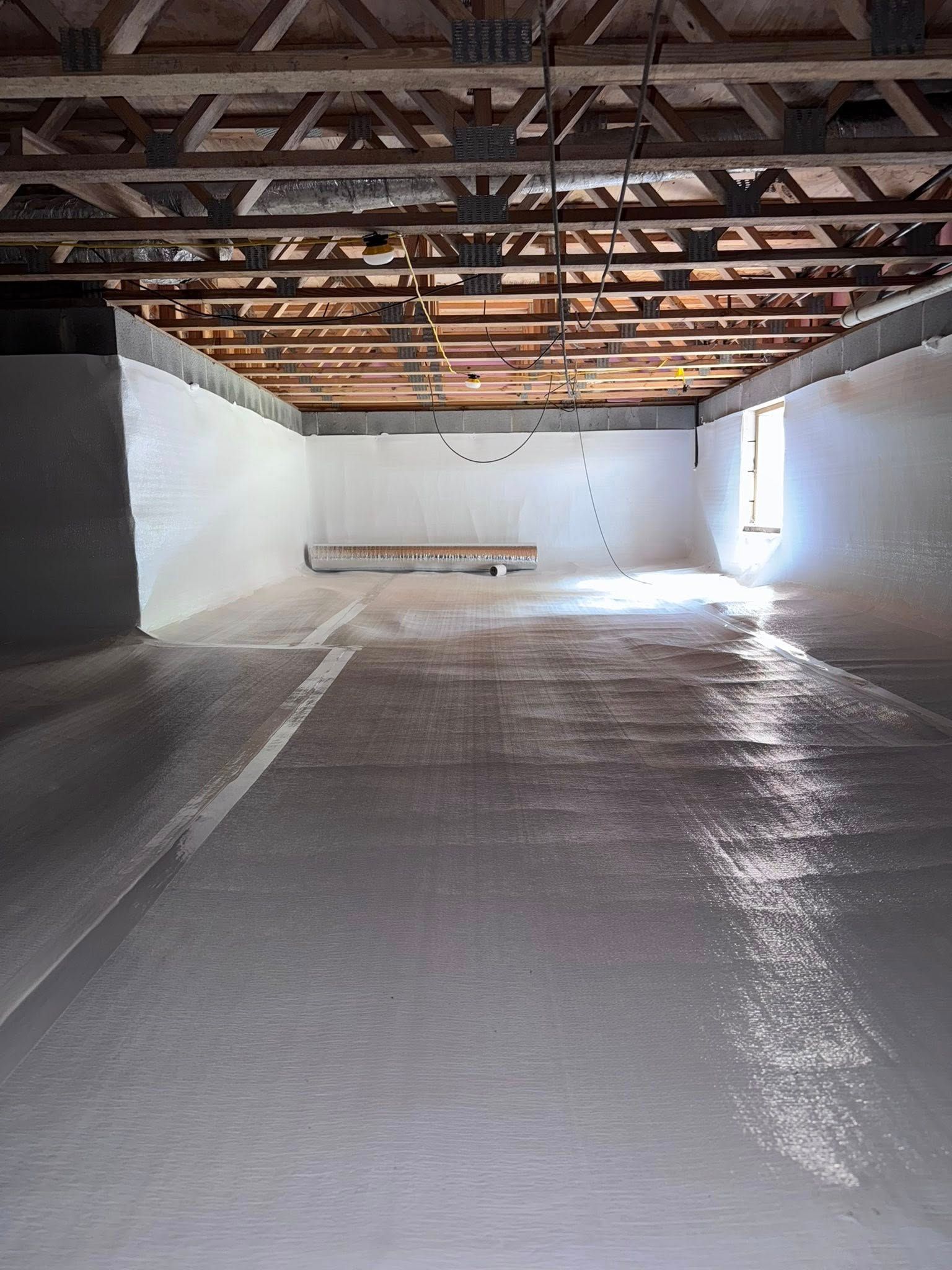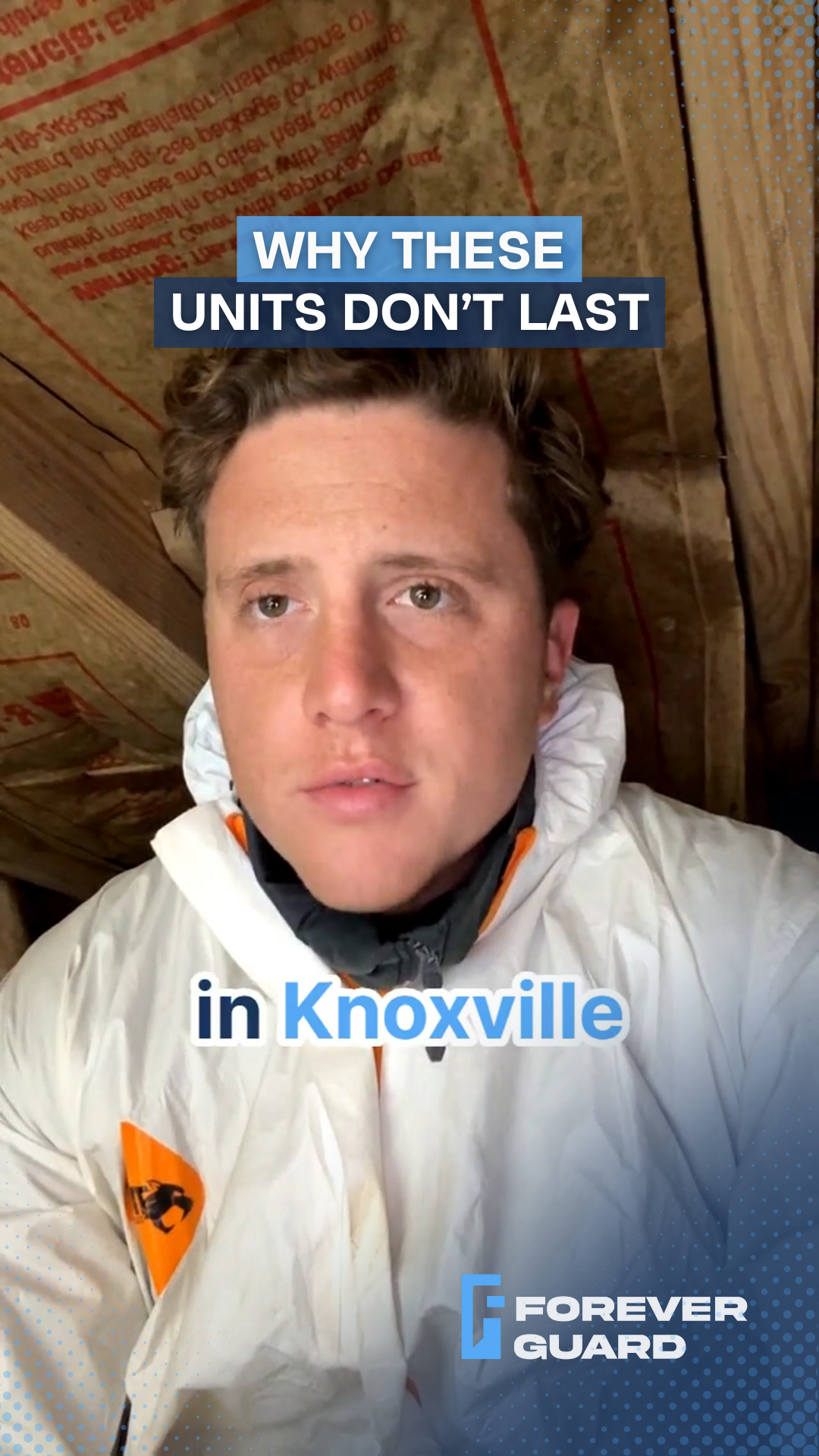What Those Water Droplets Under Your House Are Trying to Tell You
Understanding the Science Behind Crawl Space Condensation
A crawl space expert explains why moisture appears on cold surfaces and what it means for your home
I was out in Rockwood recently doing an inspection, and the homeowner was convinced they had a plumbing leak.
They kept seeing water droplets under their porch, dripping from the metal supports.
But when I got down there, I knew immediately what was really happening.
No leak. No broken pipe. Just basic science working against their home.
What I found was hot, humid air from the crawl space hitting cold metal surfaces.
And every time that happens, you get condensation - just like a cold glass of tea on a summer day.
The difference is, this wasn't happening once.
It was happening constantly, creating the perfect conditions for serious problems.
The Temperature-Humidity Connection
Here's how it works, and it's simpler than you might think. Warm air holds moisture. When that air cools down, it can't hold as much anymore. So where does that moisture go? It condenses right onto whatever cold surface the air touches.
For every single degree that air cools, the relative humidity goes up by 2.2 percent. Keep cooling it, and eventually you hit the dew point - that's when water starts forming on surfaces.
In this Rockwood crawl space, hot humid air was coming up through an opening, hitting the cold metal under the porch, and dumping all that moisture right onto the supports. Day after day, creating a constant drip that was slowly destroying the structure above it.
From Condensation to Serious Damage
Those water droplets aren't just annoying - they're doing real damage. When moisture is constantly present, fungal growth takes hold. And once it starts, it spreads fast.
In this crawl space, the fungal growth was everywhere. But the real problem was what it had done to the wood joists. Some of them were so rotted that they'd lost their structural integrity. We're going to have to sister new lumber alongside them just to make sure the floor above stays solid.
This didn't happen overnight. It took months, maybe years, of constant moisture from that condensation. But that's how crawl space problems work - slow and steady until suddenly you're looking at major repairs.
Why Ventilation Doesn't Fix This Problem
A lot of homeowners think the answer is more ventilation. Open up those vents, let the air flow, and the problem goes away, right?
Wrong. In fact, ventilation often makes it worse.
When you ventilate a crawl space in our climate, you're bringing in hot, humid outside air. That air cools down when it gets under your house, and all that moisture condenses out. You end up with exactly what we found in Rockwood - water droplets, fungal growth, and rotting wood.
The issue isn't airflow. It's the air itself. Until you control what kind of air is in your crawl space, you're just moving the problem around.
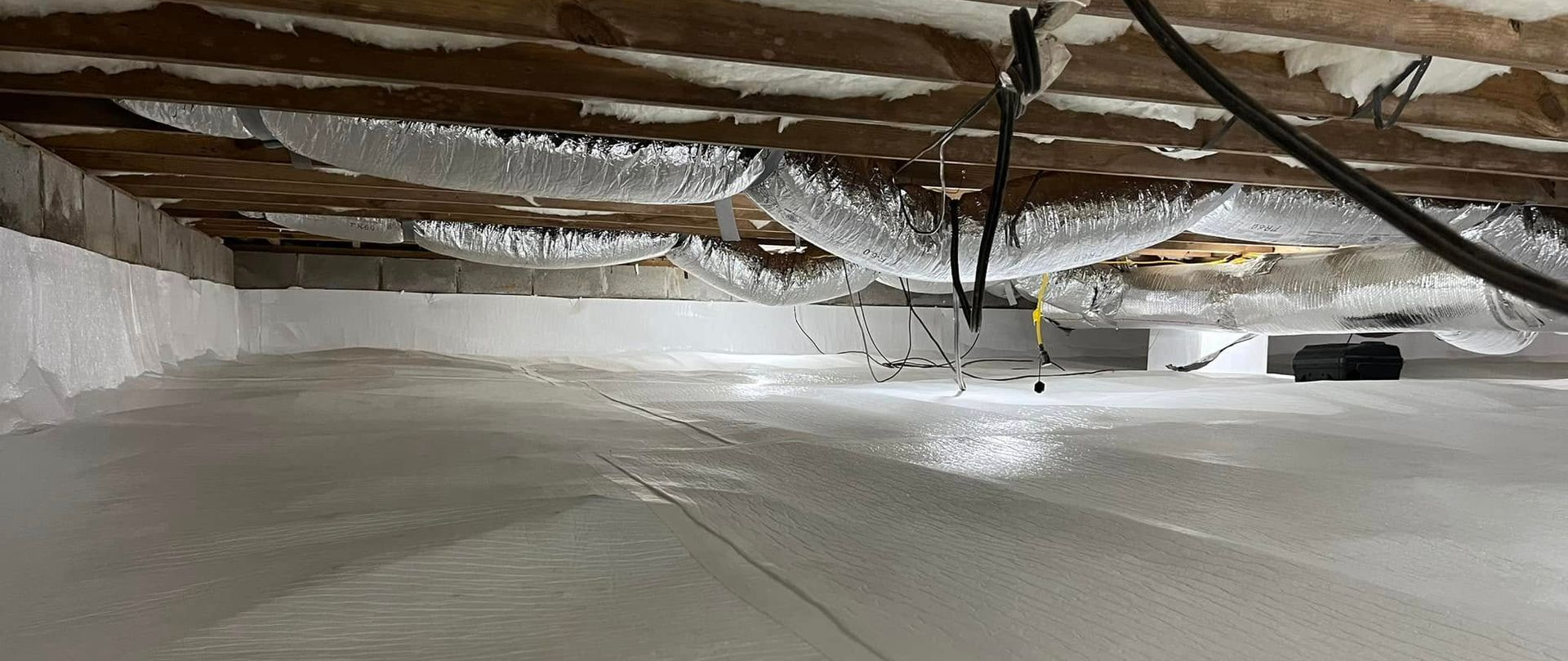
How Encapsulation Solves the Root Cause
Encapsulation takes a completely different approach. Instead of fighting symptoms, we address the root cause - that hot, humid air.
When we encapsulate a crawl space, we seal it off from outside air. We install a heavy-duty vapor barrier on the ground and walls. We treat any existing fungal growth and kill it. Then we dehumidify the space to keep moisture levels where they should be.
This stops condensation before it starts. No more water droplets. No more fungal growth. No more rotting wood. We're controlling the environment instead of letting it control your home.
Protect Your Home's Foundation
Look, I get it. Most people don't think about their crawl space until something goes wrong. But by the time you notice problems inside your house - sagging floors, musty smells, high energy bills - the damage under your house is already serious.
Here's what to watch for:
- Water droplets on metal surfaces or pipes
- Musty odors coming through your floors
- Increased humidity inside your home
- Visible fungal growth on wood or insulation
- Soft spots or uneven areas in your flooring
If you're seeing any of these signs, don't wait. The longer moisture sits in your crawl space, the more damage it does. And the more expensive the repairs become.
We can inspect your crawl space, explain exactly what's happening, and give you honest recommendations about what needs to be done. No pressure, no games - just straight talk about protecting your investment.

